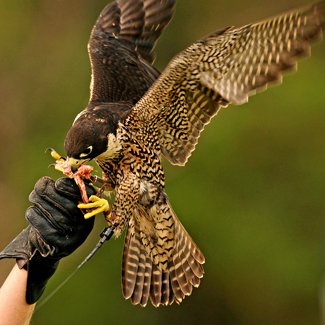Fledgling success for peregrine falcon project

IN THE AREA around Bairnsdale, Victoria, three juvenile peregrine falcon chicks have survived to completed their first flight. They launched from nest boxes built in 2010 as part of an AG Society sponsored project.
While peregrine falcons aren’t endangered in Australia as a whole, over the last 20 years active nests have declined from 12 to three on the plains around the Gippsland town.
The reason for the decline is that the falcons – which often make their homes on cliffs or in abandoned stick nests constructed by other bird species – have been nesting here in tree hollows in Gippsland red gum grassy woodlands. These woodlands have been classed as a critically endangered habitat by the Australian Government since 2009.
Power pole nests
The nest boxes were installed by the Gippsland Plains Conservation Management Network (GPCMN), on the advice of ornithologist and author David Hollands, who warned of the dire future facing hollow-nesting raptors in the area.
In all, six nest boxes were constructed; five were fixed on power poles and one in a live tree as part of an experiment, as virtually all known falcon nests are in dead trees. Despite a bit of competition for the boxes from other birds, peregrines ultimately settled in five of the six, including the live tree.
Local naturalist Roger Bilney – who, along with his son Rohan, discovered the chicks last year – is pleased with the developments. “It is exciting, and shows that some species can get by with a little leg up,” he says.
“It helps when they are fairly adaptable,” Roger says. “It may be a first in Australia, for [fledglings to survive in] a nest box in a living tree.”
Fast and friendly raptors
The fastest animal on the planet, reputedly reaching speeds as high as 250km/h a dive, peregrine falcons have historically had a strong relationship with humans, and have been tamed for falconry for over 3000 years. Spread across they globe, they can be found on every continent except Antarctica, living in a variety of habitats, from desert to tundra, and have even been known to nest on skyscrapers and bridges in major cities.
The GPCMN is a network of individuals and agencies dedicated to the management and restoration of Gippsland’s critically endangered red gum grassy woodlands, and species that inhabit them. It has plans to set up more nest boxes in 2012.
The experiment was funded thanks to the Bairnsdale Power Station, HVP Plantations, Bairnsdale Police and publicans and the AG Society.
RELATED STORIES

